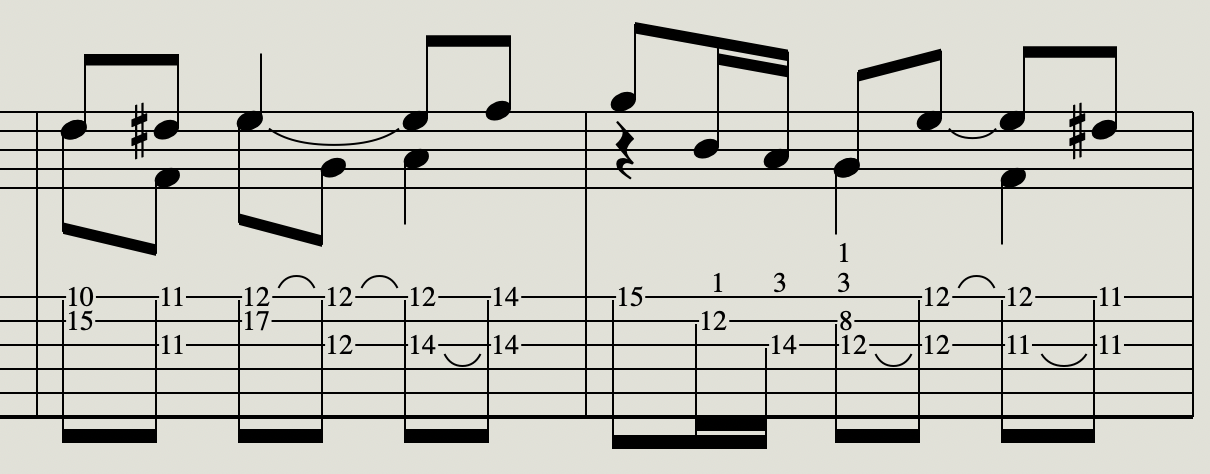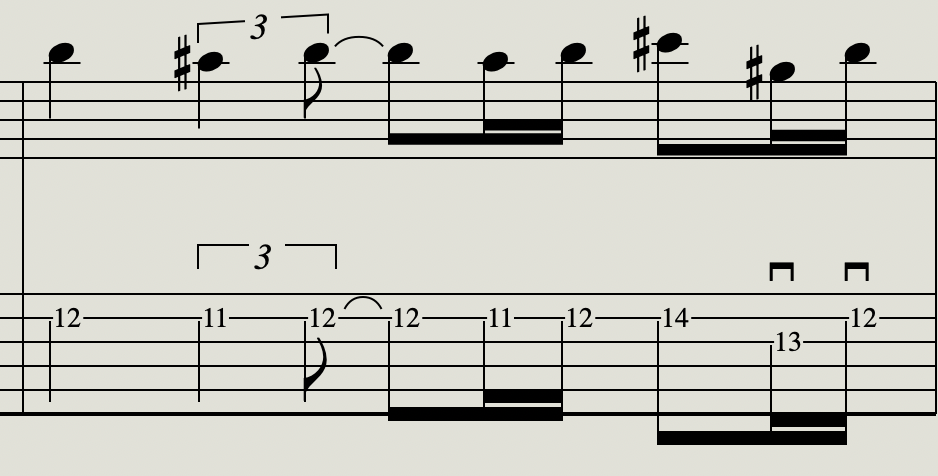How to Increase Speed With Difficult Riff
A former student recently emailed me with the following question:
Hey Sam,
In one month we´ll be playing the final concert for this semester. We´re doing one song that has a rather tricky Intro Riff.
The target BPM for the riff are about 90 to 93. I can play it reliably at about 80 Bpm. That means at 80bpm I´m not making any mistakes. As soon as I crank it up to the target speed I´m starting to struggle and mistakes start to occur.
My approach so far has been:
- Practise for 3 min at a really slow tempo where you focus on all the micro movements the fretting hand is doing.
- Rest for 2min
- Practise for 3min at a very high tempo. So at least 5bpm above the target.
- Repeat that process
I´ve made a lot of progress with this approach. I´m wondering however if there´s something I could do to further optimise this.
Do you have any suggestions? Things to watch out for?
My Reply
Your approach is pretty good. I would add three minutes of “just playing it” in the context of the song, so the bits before and after it too.
When practising make sure you are using a metronome that is playing to the smallest subdivision. So if your riff has eighth notes, your metronome should be playing eighth notes. If your riff has sixteenths, the metronome should be playing sixteenths. Make sure you know where every note in the riff has to go - so writing it out in notation, or at least tab with the rhythm notated, will be helpful. If you need to, write the “count” underneath the rhythm notation.
You should be clear on the:
- count
- picking directions for every note
- fingers for every note
You can see a couple of examples from pieces that I’ve been working on where I’ve done just that here:


When I’m working on a tricky piece, I’ll notate the fingers and picking directions for the bit I’m struggling with. This accomplishes two things:
- It serves as a conscious reminder while practising to do it correctly
- When I look at it tomorrow I know what I need to do - otherwise I’ll probably forget what I’d done and why I did it.
Also look at how many mistakes you are making and what types of mistakes you are making. For example, if there is a section where, when making the metronome faster you find that you are randomly changing picking direction, when doing the slow practice focus on repeating the correct picking direction, and when it comes to fast practice, make sure you are consciously minding the picking direction. If, when playing fast, you are finding that you are hitting an open string by accident, when practising slowly focus on making sure you don’t hit that open string.
The purpose of the slow practice should be to fix the mistakes in the fast practice, by consciously training your hands to do the correct thing - don’t fall into the trap of mindlessly playing it slowly.
You can also look at how you are “cranking” up the tempo. If you can play the riff reliably at 80bpm with no mistakes, try the following tempo ladder:
80bpm, 83bpm, 86bpm, 89bpm, 92bpm, 95bpm, 98bpm.
At the upper two tempos things will probably fall apart, but, try them for a couple of minutes anyway - struggle with the total failure of it; then go back down the lower tempos and start again. Keep a short log of how you are finding the tempos and as previously mentioned, the types of mistakes that you are making so that you can fix them with slow practice. Struggling at the higher tempos an important part of the process, you’re conditioning your brain to be able to process these higher tempos.
Summary
- Make sure rhythm is notated
- Use a metronome playing to the smallest subdivision
- Work through the tempo ladder
- Look at the mistakes you make, and consciously train them at lower tempos
- Spend a few minutes working on the riff in context, so that you can transition in and out of it
- Ensure you are using correct fingers and pick directions, notate these on your music if necessary